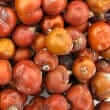Background
- Juniperus species have been used by many people around the world, but have also been recognized as toxic plants. Juniper is a flavoring in gin and other drinks and is used as a spice in small amounts. The plant displays significant toxicity to the kidneys and skin, which limits its use in medicine, except in small amounts. Juniper is safely used as a fragrance in soaps, shampoos, cosmetics, sachets and other products.
- Juniper has been used in dyspepsia (upset stomach) as a berry tea, in eczema and other skin diseases as cade oil or juniper oil. Juniper is thought to be more effective and less irritating when combined with uva ursi, manzanita or pipsissewa. There is a long history of juniper use in Europe and China, but no published clinical trials.
References
- Adams RP. Systematics of Juniperus section Juniperus based on leaf essential oils and random amplified polymorphic DNAs (RAPDs). Biochem.Syst.Ecol. 7-1-2000;28(6):515-528.
View Abstract - Argento A, Tiraferri E, Marzaloni M. [Oral anticoagulants and medicinal plants. An emerging interaction]. Ann Ital.Med Int 2000;15(2):139-143.
View Abstract - Asakura K, Matsuo Y, Oshima T, et al. omega-agatoxin IVA-sensitive Ca(2+) channel blocker, alpha-eudesmol, protects against brain injury after focal ischemia in rats. Eur.J Pharmacol. 4-7-2000;394(1):57-65.
View Abstract - Barrero AF, Arseniyadis S, Quilez del Moral JF, et al. First synthesis of the antifungal oidiolactone C from trans-communic acid: cytotoxic and antimicrobial activity in podolactone-related compounds. J Org.Chem. 4-19-2002;67(8):2501-2508.
View Abstract - Buckle J. Use of aromatherapy as a complementary treatment for chronic pain. Altern.Ther.Health Med 1999;5(5):42-51.
View Abstract - Cool LG, Adams RP. A pregeijerene isomer from Juniperus erectopatens foliage. Phytochemistry 2003;63(1):105-108.
View Abstract - Gardner DR, Panter KE, James LF, et al. Abortifacient effects of lodgepole pine (Pinus contorta) and common juniper (Juniperus communis) on cattle. Vet.Hum.Toxicol. 1998;40(5):260-263.
View Abstract - Johnson W. Final report on the safety assessment of Juniperus communis extract, Juniperus oxycedrus extract, Juniperus oxycedrus tar, Juniperus phoenicia extract, and Juniperus virginiana extract. Int J Tox 2001;20 (sup 2):41-56.
- Johnston WH, Karchesy JJ, Constantine GH, et al. Antimicrobial activity of some Pacific Northwest woods against anaerobic bacteria and yeast. Phytother Res 2001;15(7):586-588.
View Abstract - Koruk ST, Ozyilkan E, Kaya P, et al. Juniper tar poisoning. Clin.Toxicol.(Phila) 2005;43(1):47-49.
View Abstract - Leitner J, Hofbauer F, Ackerl M. [Poisoning with a podophyllin-containing wart-treating tincture]. Dtsch.Med Wochenschr. 7-12-2002;127(28-29):1516-1520.
View Abstract - Martin AM, Queiroz EF, Marston A, et al. Labdane diterpenes from Juniperus communis L. berries. Phytochem.Anal. 2006;17(1):32-35.
View Abstract - Nakanishi T, Iida N, Inatomi Y, et al. Neolignan and flavonoid glycosides in Juniperus communis var. depressa. Phytochemistry 2004;65(2):207-213.
View Abstract - Salido S, Altarejos J, Nogueras M, et al. Chemical studies of essential oils of Juniperus oxycedrus ssp. badia. J Ethnopharmacol 2002;81(1):129-134.
View Abstract - Sanchez de Medina F, Gamez MJ, Jimenez I., et al. Hypoglycemic activity of juniper "berries". Planta Med 1994;60(3):197-200.
View Abstract







